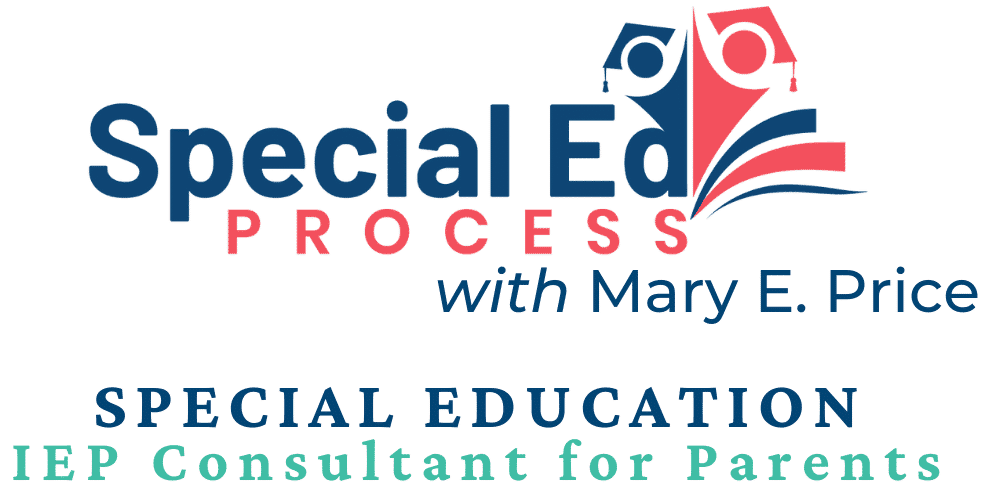Key Special Education Strategies Parents Can Implement Now

Do you ever wish you knew what type of information will help you advocate for your child more effectively? Here are two proven strategies you can put into action right now to collect the information you need to get started.
To successfully navigate the special education process you need to identify effective strategies and be willing to invest the time it takes to put those strategies into action. For years I simply refused to use any of the strategies recommended by advocates and attorneys.
Why? Because I hated doing what I believed to be unnecessary and time-consuming tasks.
It took me a while to realize that had I adopted these strategies from the beginning, I could have saved myself a lot of time and frustration. Properly executed strategies improved my understanding of my son’s disabilities and areas of need. As a result, I was in a much better position to advocate on his behalf and get the school to agree to additional supports and services for my son.
Read this article if you want a better understanding of …
- The purpose behind keeping a detailed log of communications with the school
- The collection of objective data and subjective data in the public school setting
- The 3 key steps for collecting relevant data to support your request for additional services
Strategy #1 – Keeping A Detailed Log Of Communications With The School

Failing to recognize the importance of keeping a detailed log of your verbal discussions with school personnel can prove to be a costly mistake.
Whether it’s you calling the school, or the school calling you, it’s important to document – who you spoke with; their job title, direct phone number, and email address; the date and time; and a detailed description of what you discussed.
When I say detailed, I mean take notes as if you were documenting the events for a stranger. When you read your log a year from now, you want to easily figure out why this information was significant.
You should document all discussions about your child’s educational program, especially any changes to the current program. In my experience, school personnel will make all sorts of (verbal) promises related to your child’s educational program. Later, the same individuals will claim that you must have misunderstood what was stated.
Email Recap
To avoid the “you must have misunderstood” scenario, send a follow-up email or letter to the person you spoke with documenting your understanding of the discussion. When writing this follow-up email, it’s important to keep your tone friendly and focused only on the facts. If the school does not challenge the information, it will be viewed as an accurate representation of what was discussed.
The overall objective is to send an email recapping what was discussed without putting the school on the defensive. In a nutshell, you want to maintain a positive relationship with the school for as long as possible. If the tone of your email suggests that you are trying to create a paper trail, your relationship with the school may start to sour.
To be clear, you are creating a paper trail because documentation of this type (communication logs and email exchanges) may come in handy if your child is later found to be eligible for additional support and services.
Stay Organized
It’s important to keep your communication logs and email exchanges organized. These documents will play a key role when writing your Parent Concerns Letter before the IEP meeting and/or Parent Input Statement to be included in the IEP.
To stay organized, each school year I created email folders for each member of the IEP Team so I could easily locate specific communications. I also printed and filed (in a binder) all significant email exchanges, especially anything related to changes to my son’s educational program.
Control The Timing
In addition to keeping a detailed log, I also made every effort to control the timing of my communications with the school. In my experience, the school would often call to discuss issues they didn’t necessarily want to put in writing. Whenever possible, I allowed the caller to leave a voicemail message. If it wasn’t an emergency, I returned the call when I could to take appropriate notes.
When in doubt, always remember, if it’s not written down, it didn’t happen.
Click on the image above to get your FREE Complete IEP Binder Kit. This is the same resource I used as part of the Documentation 101 System I created to successfully navigate the IEP process.
Strategy #2 – Gathering Objective & Subjective Data

The best way for Parents to support any request for special education support and services is by presenting the school with relevant objective data and subjective data.
So, what is the difference between the two types of data?
Objective Data
In the public school setting, objective data is collected to get an accurate picture of a student’s level of achievement.
This type of data should be gathered and reported without bias, opinion, or interpretation. Objective data is represented by measurements (academic performance – grades, test scores, attendance records, and behavioral records) or direct observations (what the student is actually doing).
Subjective Data
In the public school setting, subjective data is collected to get a better understanding of how the student feels about their educational program.
This type of data is based on the student’s personal opinions (biases), feelings, and interpretations. Subjective data is collected by asking open-ended questions and allowing the student to share their thoughts and opinions. This form of data collection is most effective when the right questions are being asked and the student believes they are in a safe space to express their honest opinions.
In addition to open-ended questions, data can be collected using surveys and interviews; however, these methods are generally viewed as not being as reliable.
3 Steps I Used For Collecting Data
Outlined below are the steps I followed to collect objective and subjective data about my son’s educational program. I then shared this information with the school to support my request for additional support and services.
First Step
Now, I’ll be the first to admit that I’m a bit ‘old-school’ so I preferred to have paper and digital copies of all key documents. So, the first step in my system is to invest in a quality high-capacity printer with scanning functions. Today, you can purchase a printer/scanner at a very reasonable price. I highly recommend a color printer because the documents you will be copying are often in color.
Second Step
The second step is to gather documents in all of the areas your child is having difficulty in, including, completed assignments (homework, quizzes, tests, and projects) as well as any benchmark assessment reports.
Next, you will scan all of the documents so you have a digital copy of all completed work. It’s a good idea to carefully review every file to make sure the information is scanned properly. You will be writing notes directly on the original document so the scanned versions need to be a good copy.
If you’re anything like me, you don’t feel comfortable writing on the original documents. If that’s the case, you can make a copy and take notes on that version.
Third Step
The third step is where you begin to document your concerns and observations.
For the objective data, review each completed assignment. Write down any patterns of difficulty or concerns you have. Also, note anything you observe your child doing or saying while completing the assignment. You should also write down the level of assistance you are providing, such as reteaching course material.
For the subjective data, you should document anything your child shares with you about the challenges they are having and how completing the assignments makes them feel.
For example, when my son was in 4th grade, he struggled with math and would cry whenever it was time to do homework. I spent a lot of time reteaching the course material because he was unable to recall what he learned earlier that day. I wrote all of this information directly on my son’s homework assignments so his teacher was aware of what I was seeing at home.
Additionally, I asked my son a lot of questions and after working with his speech-language therapist we learned that he lacked a basic understanding of what the symbols (+, -, x) actually meant. This lack of understanding was directly related to his speech-language impairment.
To learn, my son required specially-designed language-based math instruction.
Disclaimer: Mary Price is not an attorney or legal expert. Special Ed Process does not offer legal advice. Click here for Full Disclaimer.



